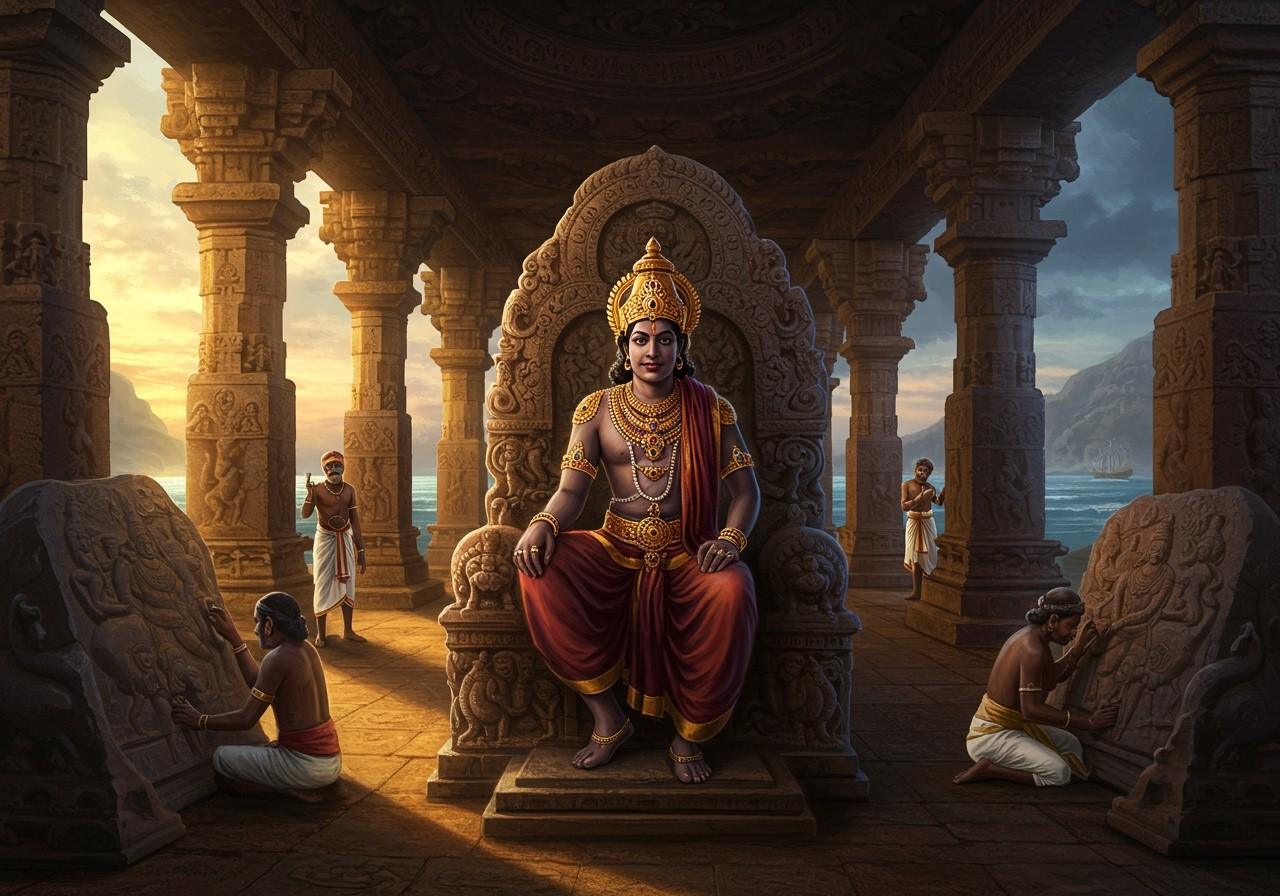
Narasimhavarman II, also known as Rajasimha, a prominent ruler of the Pallava dynasty (3rd-9th centuries CE), left an indelible mark on South Indian history through his remarkable architectural and cultural achievements. This article delves into his contributions, exploring his influence on the Pallava dynasty and South India.
Historical Background of the Pallava Dynasty
The Pallava dynasty, reigning from the 3rd to 9th centuries CE, significantly shaped South Indian history, particularly its Dravidian architecture. Rulers preceding Narasimhavarman II, such as Mahendravarman I and Narasimhavarman I, laid the groundwork for the dynasty’s architectural legacy. Narasimhavarman II ascended to power during a period of dynamic political activity and flourishing cultural expression.
Narasimhavarman II: A Ruler’s Profile
Narasimhavarman II, whose title “Rajasimha” translates to “king of kings,” embodied leadership. His early life cultivated the administrative acumen and military prowess that defined his reign. He expanded the Pallava kingdom’s territorial reach and strengthened its authority. Furthermore, his diplomatic engagements with neighboring kingdoms and international entities fostered peace and stability.
Architectural Marvels of Narasimhavarman II’s Reign
Narasimhavarman II’s era witnessed an architectural renaissance. The Kailasanatha Temple in Kanchipuram stands as a testament to the Dravidian architectural style prevalent during his time. The Shore Temple at Mahabalipuram further exemplifies his architectural vision. These structures showcase distinctive elements and innovations that influenced later South Indian temple designs. The dynasty’s transition from rock-cut temples to monolithic rathas and grand structural temples, like the Vaikuntha Perumal Temple, laid the foundation for the Dravidian style. This artistic legacy influenced subsequent dynasties such as the Cholas, Pandyas, and Vijayanagara rulers.
Explore the architectural wonders of the Pallava dynasty with our curated collection of temple-inspired items. Discover the Badami Cave Temples and delve into the religious significance and history of the Kandariya Mahadeva Temple.
Cultural Flourishing under Narasimhavarman II
Narasimhavarman II was a fervent patron of the arts and literature. He supported Tamil and Sanskrit scholars and poets, nurturing the evolution of classical dance and musical traditions in South India. His reign prioritized the preservation and promotion of religious scriptures and rituals. He also established educational institutions and libraries to cultivate knowledge and learning. Explore articles on the cultural heritage of Khajuraho and Kandariya Mahadeva and the architectural legacy of the Chandela dynasty.
The Enduring Legacy of Narasimhavarman II
Narasimhavarman II’s reign significantly impacted South Indian culture and architecture. The Pallava architectural style influenced succeeding dynasties, including the Cholas and the Vijayanagara Empire. He remains a revered figure in South Indian culture today. His policies and accomplishments continue to be subjects of study and appreciation in contemporary historical and architectural discourse. Discover more about India’s rich temple heritage with our guides to the Sas-Bahu Temples and their locations, history, and significance.
Poojn.in: Connecting You with India’s Rich Cultural Heritage
Poojn.in, India’s leading online store for cultural and religious goods, offers a wide selection of products to enhance your spiritual practices and connect you with the rich traditions of India. Whether you seek divine idols, puja essentials, or sacred accessories, Poojn.in provides authentic, high-quality items to support your devotion.
- Divine Idols: Find exquisitely crafted idols of deities, including Lord Shiva (Lord Shiva Marble Dust Murti, Standing Shiva Pure Marble Dust Murti), to enhance your home altar.
- Puja Essentials: Explore a comprehensive range of puja items, from diyas and incense (Mangalam Camphor Butter Paper, Mangalam Camphor Tablet) to sacred threads and ritual accessories.
- Sacred Accessories: Discover a variety of religious accessories, including malas, yantras, and spiritual jewelry, to deepen your connection with your faith.
Visit Poojn.in today to experience the convenience of online shopping for all your spiritual needs.
Conclusion
Narasimhavarman II’s reign represents a golden age in the Pallava dynasty’s history. His visionary leadership in architecture, arts, and education has left an enduring legacy. The temples he commissioned, the artistic expression he fostered, and the policies he implemented continue to inspire. His contributions serve as a reminder of India’s rich cultural heritage and the importance of its preservation.


